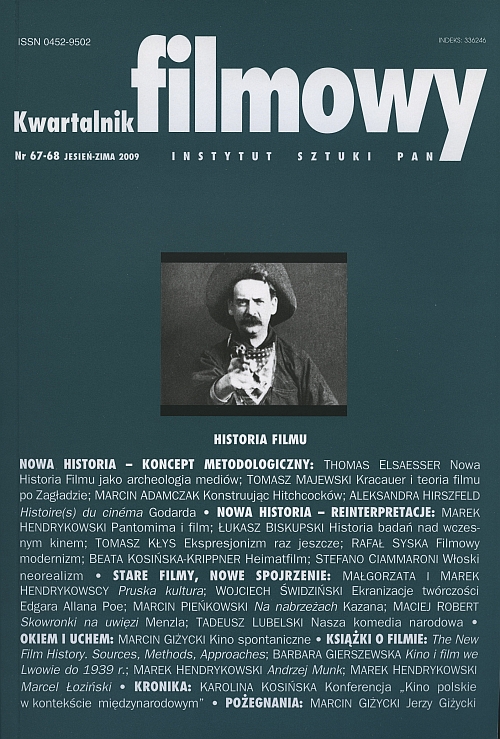Między awangardowym eksperymentem a tanim horrorem. Ekranizacje twórczości Edgara Allana Poe przed 1939 rokiem.
Between avanguard experiment and a cheap horror.The screenings of Edgar Allan Poe's work before 1939.
Author(s): Wojciech ŚwidzińskiSubject(s): Theatre, Dance, Performing Arts
Published by: Instytut Sztuki Polskiej Akademii Nauk
Keywords: Edgar Allan Poe; horror; silent cinema.
Summary/Abstract: Before 1939 filmmakers were fascinated with the work and person of Edgar Allan Poe. This had a significant influence on how his work was received by the audience. Before the Second World War Poe, alongside Shakespeare, Conan Doyle and Dumas, was a favourite among American and European filmmakers, and his work was commonly adapted for the cinema screen. As an author who had roots in the American South, he attracted attention of D. W. Griffith and other Hollywood pioneers. As the experimental "The Fall of the House of Ushers" (1928) by Watson and Webber proves, Poe was also popular among the New York avanguard. In Europe the cult of Poe was initiated by Baudelaire and continued by people such as Paul Valéry, Claude Debussy, Hanns Heinz Ewers, Karol Irzykowski. Filmmakers were not far behind, as shown by two masterpieces of the silent cinema: "Student from Prague" (1913) inspired by William Wilson, and the "Fall of the House of Ushers" (1928) by Jean Epstein. In the 1930s the Hollywood filmmakers took lead. It was then that a series of low budget thrillers that were feeding of Poe’s work were made. This taking possession of Poe’s work is one of the most interesting moments in how Poe’s writing was received in the twentieth century cinema.
Journal: Kwartalnik Filmowy
- Issue Year: 2009
- Issue No: 67-68
- Page Range: 230-242
- Page Count: 13
- Language: Polish

